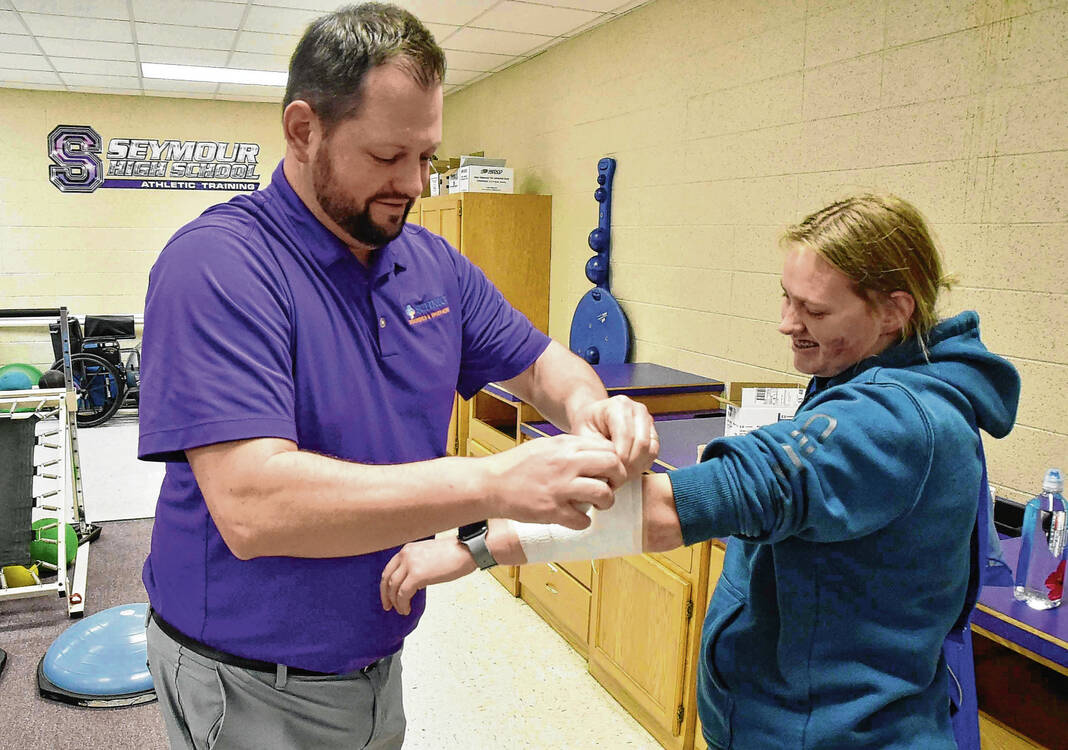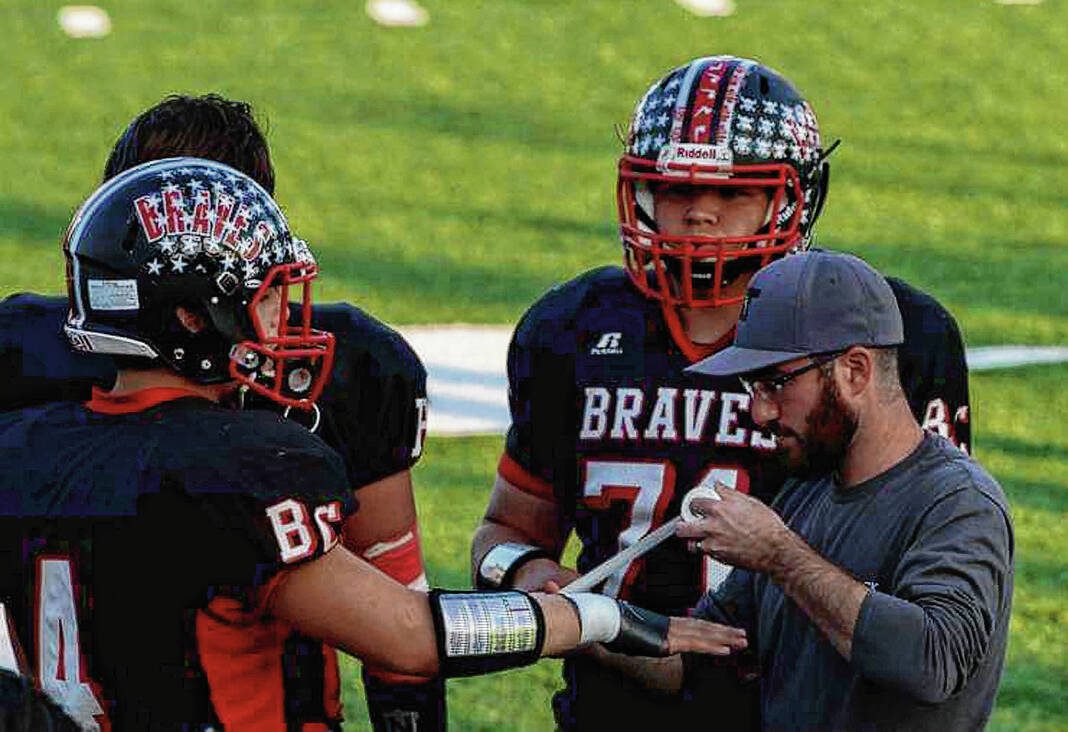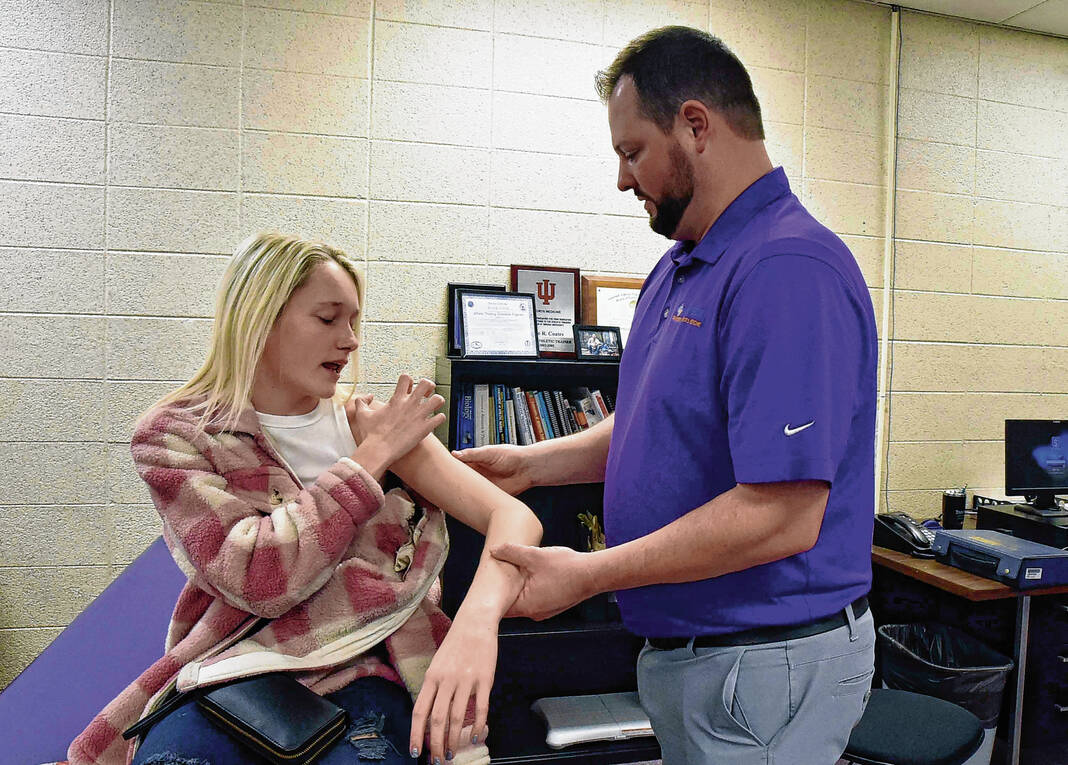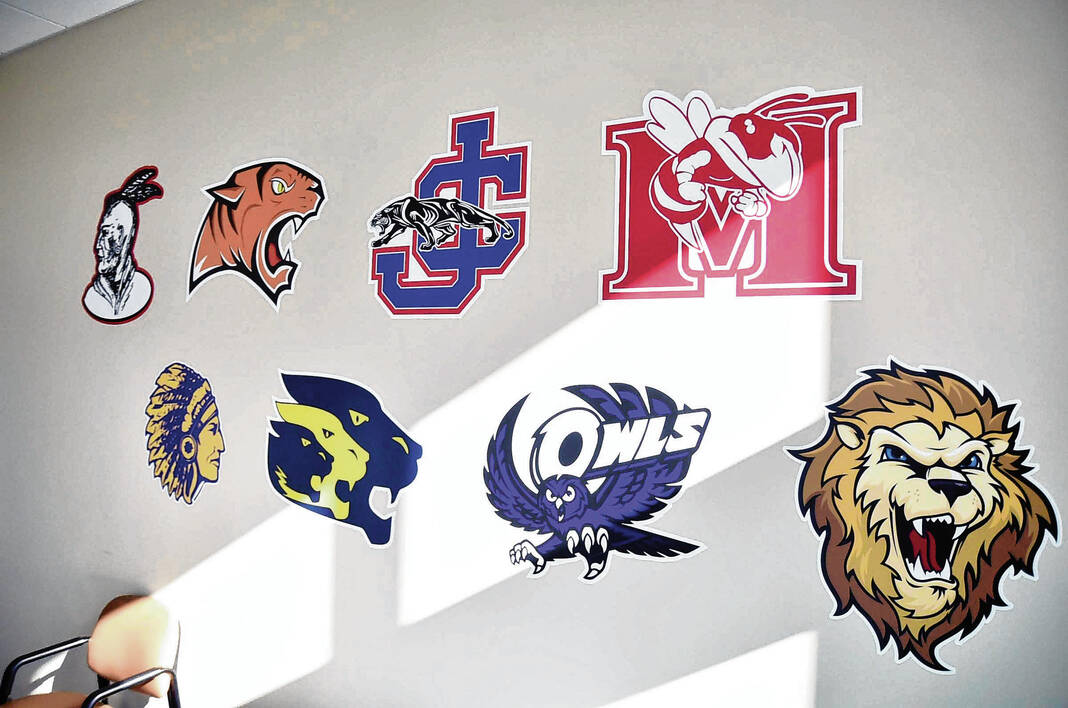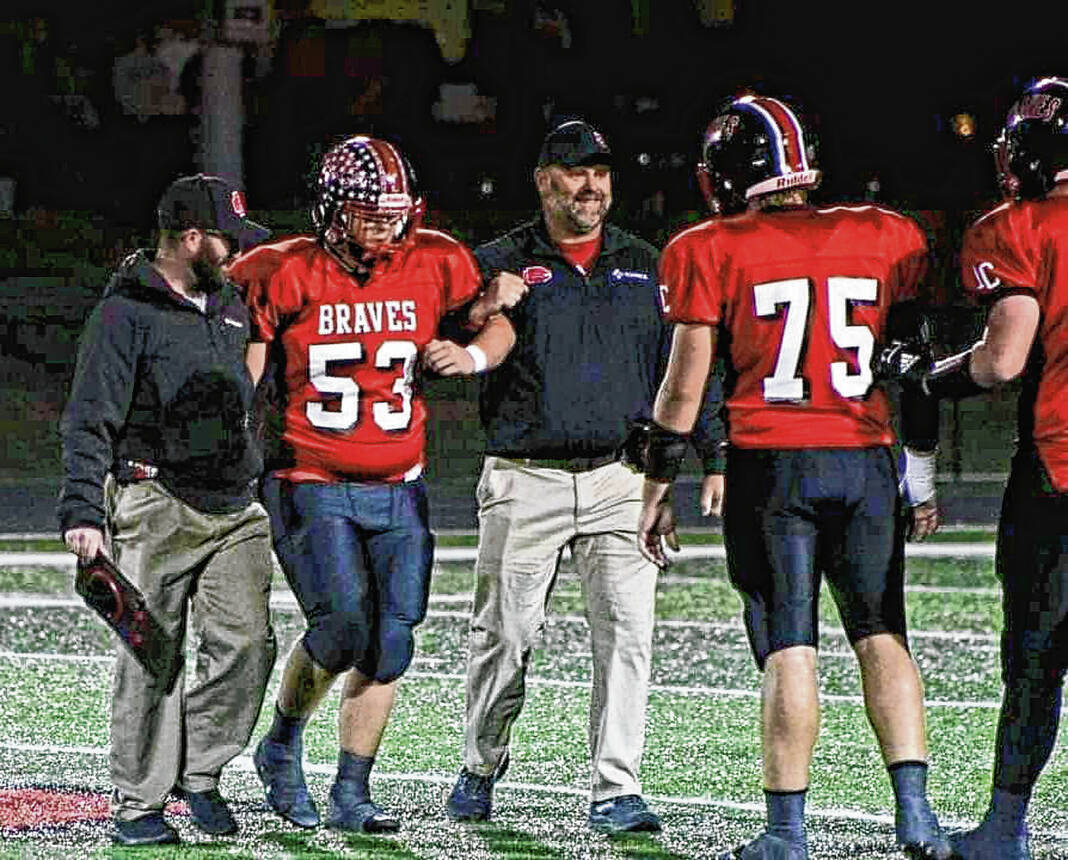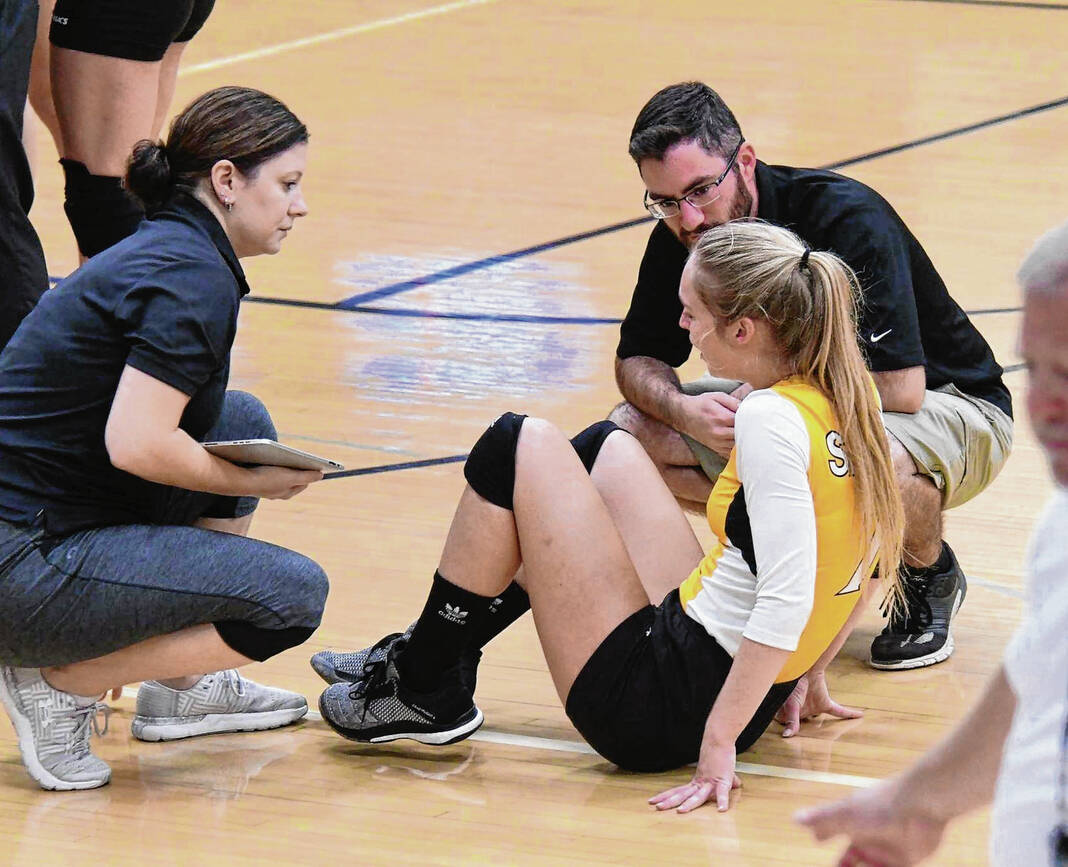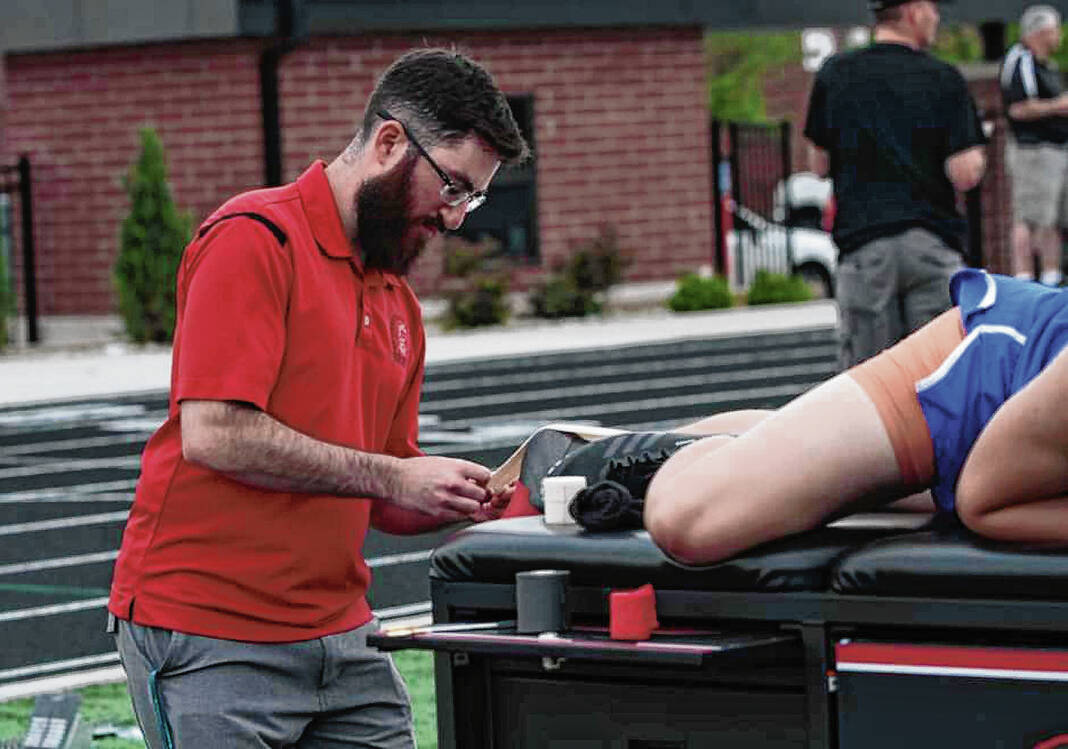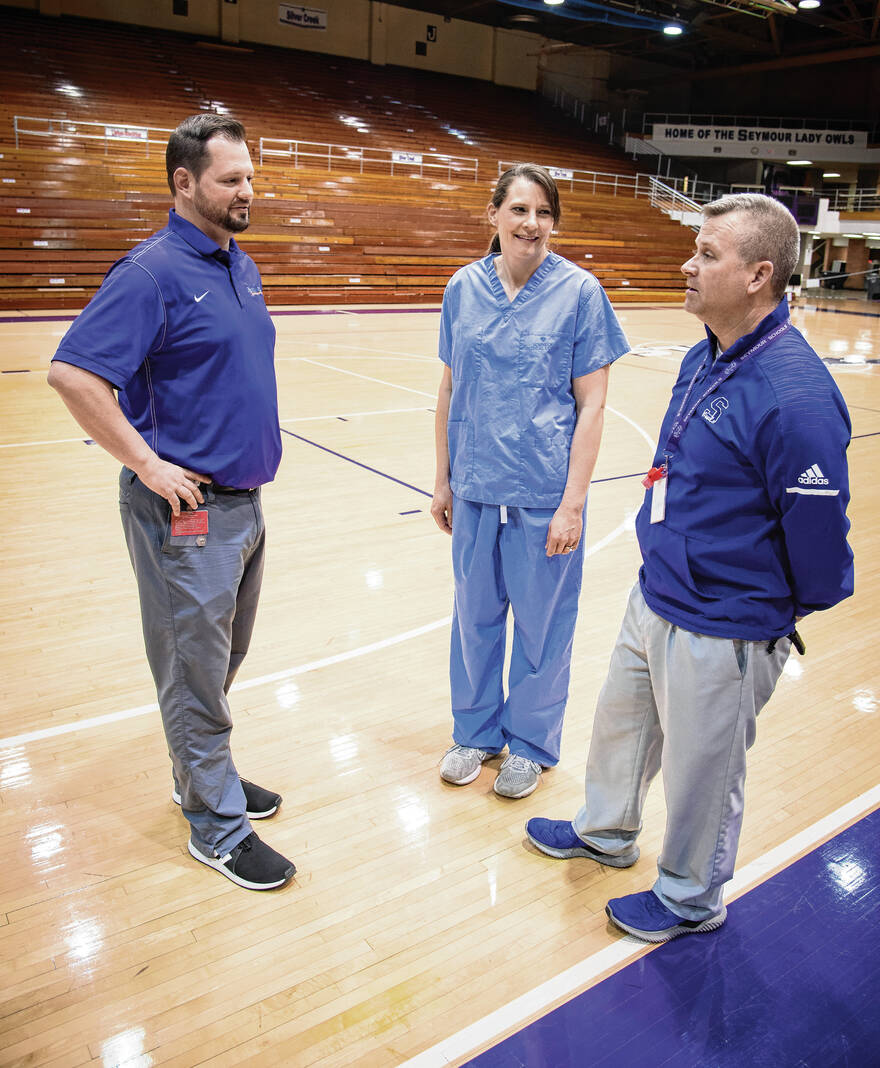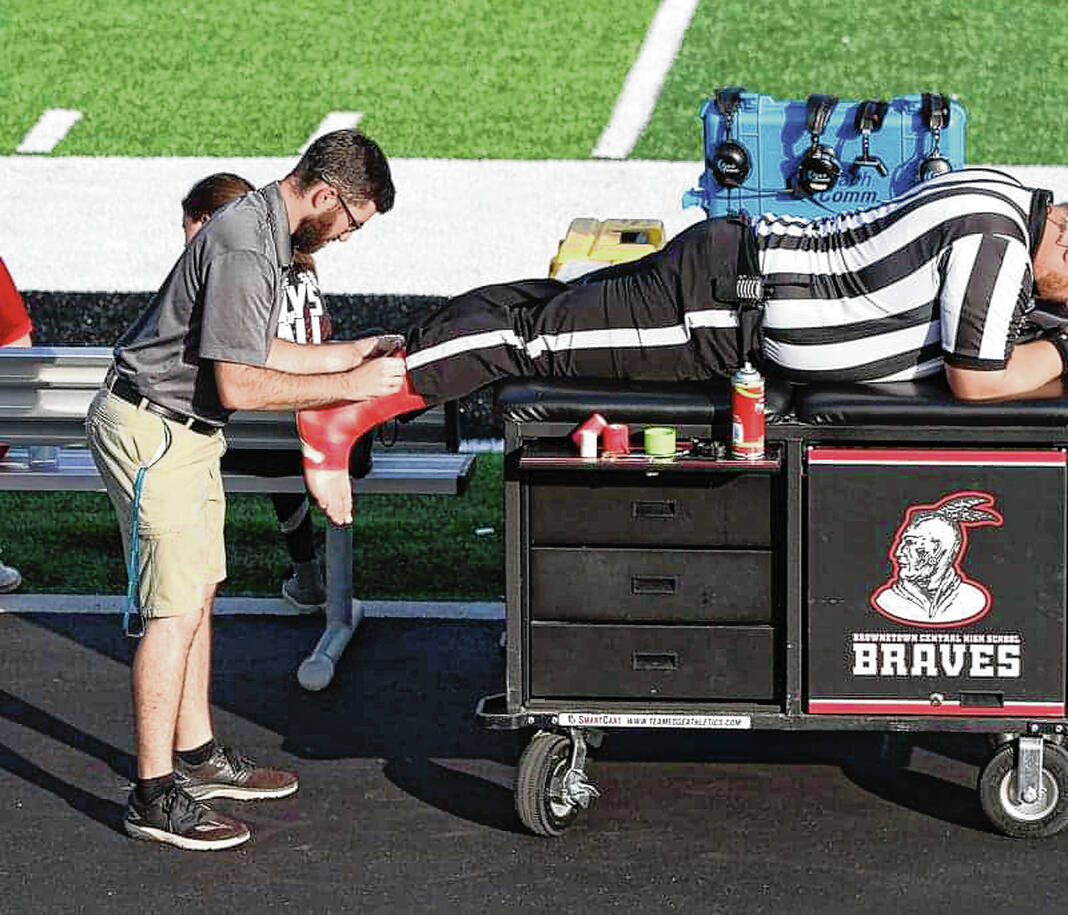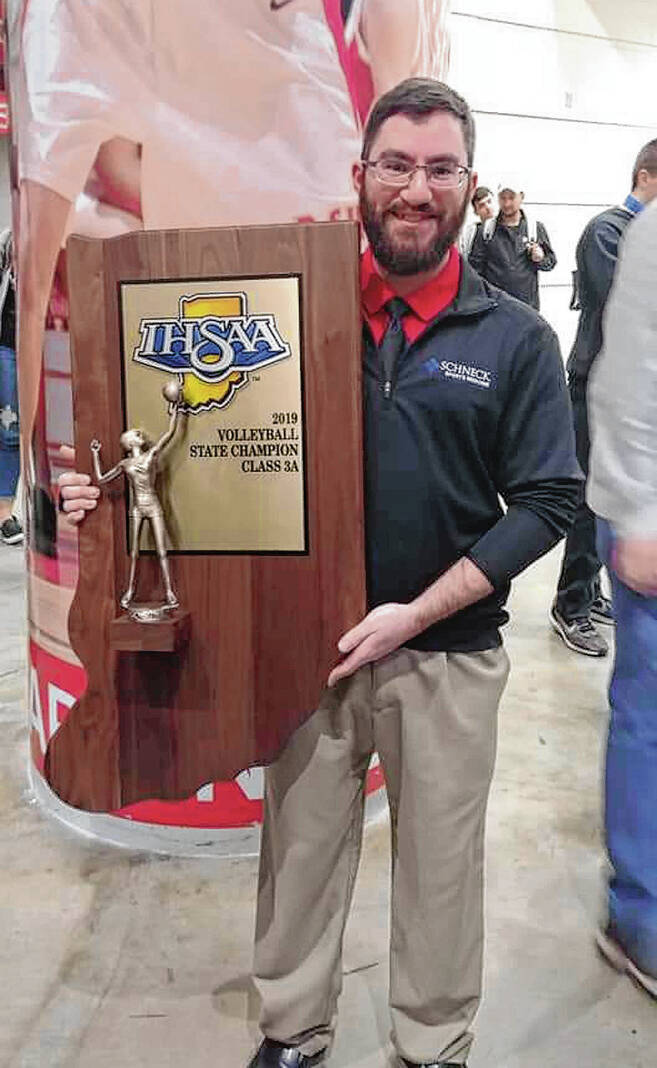Schneck Medical Center started an athletic trainer program for Jackson County’s two largest high schools — Brownstown Central and Seymour — in 2013.
In the past 10 years, that has expanded to three other county high schools — Crothersville, Medora and Trinity Lutheran — along with Jennings County, Salem and Scottsburg high schools.
That means it has gone from serving two schools in one county to eight schools in four counties. The Seymour hospital’s service area includes Jackson, Jennings, Scott and Washington counties.
“The goal was to expand,” said Holly Wischmeier, director of rehab services for Schneck. “We had just those two for several years. Then we wanted to be able to offer our services more to the community as a community service.”
Kyle Coates was the first athletic trainer hired, and he already had seven years of experience.
Starting with the two county schools with the biggest enrollment, he said they knew they could get referrals to Schneck due to the proximity of the hospital.
“Then with the hopes to go to these outlying areas where we also put some Schneck Family Cares and our orthopedists travel to those, like Salem, Scottsburg and North Vernon,” Coates said.
“Our goal was to slowly put athletic trainers there to slowly push referrals to those areas,” he said. “With the ability to send those referrals, those athletes to those offices, they still can come to Seymour but to make it easier for those families and those athletes to stay in town and go to those Schneck Family Cares.”
The athletic trainers are Schneck employees, but they spend their days at the schools.
A big benefit to the schools is it’s a free service. They sign an annual contract agreeing to market and promote the service through signage and referrals.
“What a great community benefit Schneck is providing for our service area,” Wischmeier said. “Everyone is limited with funds, and schools would not be able to probably hire their own or not have the amount of coverage that we are able to provide. … We really use this as part of improving the health care of the communities we serve.”
Coates is in his 10th year as Seymour High School’s athletic trainer, and he also serves as the patient care supervisor for Schneck’s athletic training group.
Devin Harvey has been Brownstown Central High School’s athletic trainer since 2016 and also serves in that role for Medora High School, and Kim Noon is the athletic trainer for Trinity Lutheran and Crothersville high schools.
The other athletic trainers are Melanie Anderson at Jennings County High School and Mallory Myers at Salem High School. A new trainer will start at Scottsburg High School in June.
Wischmeier said another benefit of having athletic trainers for the schools is the continuity of care.
“Our trainers work very closely with our orthopedic staff, where they can call and the orthopedic staff will work directly with the trainer, so there’s that continuity of care there,” she said. “Then if there’s any kind of surgery or intervention that we need down here in rehab, whether it be physical therapy or occupational therapy, we have that continuity that if we weren’t all part of the same system, we would not have.”
With concussions being a big issue nowadays, Wischmeier said the schools appreciate having athletic trainers with that expertise of recognizing signs and symptoms.
“That helps with their liability to have a trainer there,” she said.
Coates said it’s a benefit to athletes, parents and coaches to have an athletic trainer help with communication from the doctor.
“Coaches want that,” he said. “When someone’s hurt, that’s their main deal is ‘How long are they going to be out? When can get they back? What limitations do they have?’ I think when they go other places, there are times when there’s some general information communicated, but maybe not. If it’s a Schneck doctor, I can call them right now and say, ‘How is this kid doing? Is he ready to come back?’ and have that open line.”
The trainers can do a lot of treatments in-house but also have access to advanced health care, like orthopedics, emergency room and neurology, and can help facilitate that.
“My ultimate goal is if I can keep them playing, treating them here,” Coates said. “Kids are going to get hurt beyond what I can do. It’s good we have both of those. We can treat them here or send them wherever they need to go.”
The trainers typically report to the schools in the early afternoon to do treatments at the end of the school day so athletes can go on to practices or games, and the trainers will then attend practices and games and stand by until they are called upon for assistance.
At practices, Wischmeier said the trainers are watching for heat-related injuries and making sure athletes stay hydrated. They also help ensure athletes are getting the proper nutrition and eating a well-balanced diet.
During games, they could treat anything from minor sprains or strains to concussions, lacerations, fractures, broken bones and major injuries. They also are trained in CPR.
“That’s another thing about the job: I come in and I don’t know what I’m going to see,” Coates said. “I have an idea of ‘I’m going to see this person, this person,’ and then two new things pop up. You have to be able to triage, think on your feet, problem solve, all those kinds of things.”
When he started as an athletic trainer, Coates said the most common injuries were strains and sprains. As spots have shifted to year-round with travel and club opportunities, he sees more overuse injuries in young athletes.
“It used to be you go from fall to winter to spring sports,” he said. “Now, it’s like there’s really no cutoff between stopping and playing travel baseball, AAU basketball, so we’re seeing kids with things that we wouldn’t see maybe 10 or 15 year ago, where they are getting overuse injuries — tendonitis, breakdown of the tissue — from playing too much.”
On Jan. 9, Harvey was at a game at Medora that ended before regulation due to a traumatic brain injury that resulted in a student-athlete being spine boarded, application of a cervical collar and medically evacuated via helicopter.
Four days later at Brownstown, Harvey tended to basketball player Jack Benter after his dunk shattered the backboard.
“After getting stitches in his palm from the emergency department and missing a game while he healed, the next step was to figure out how to bandage in a way that would stay on through sweat and friction of the basketball but still remain functional enough to extend wrist for 3-point jump shots from the volleyball line,” Harvey said.
Given how much the trainers interact with the athletes, Coates said that makes them unique among health care providers.
An athlete may see their family doctor once or twice a year, but Coates said he might see them throughout their four years in high school, some in multiple sports from season to season.
“It creates, I think, a strong relationship with health care provider and patient because you’re around them daily, you know their habits, their personalities, their pain thresholds, so that gives you an advantage over your typical health care provider,” he said.
“A lot of times, we see them from when the injury happens all the way through the rehab process until they get back to their sport, whereas a lot of providers see them maybe when they are hurt, maybe six months later, not much in between, so I think that’s also a better part of the job,” he said.
Harvey said he has worked with three-sport athletes year-round, starting with summer practices and continuing throughout the seasons. That allows him to monitor how they are progressing throughout their journey.
“Coaches and teachers come and go as seasons and semesters change. Emergency medical services, doctors and physical therapists only see the student-athletes for a brief moment in the spectrum of their sport careers. Athletic trainers are there by the athlete’s side in the good days and bad,” he said.
“We see them work hard at practice and even harder in the rehabilitation phase to get back to what they love doing,” he said. “We push them, joke with them, get frustrated with them when they’re missing playing time and rejoice when they make their return to play. When a student-athlete makes a good play after overcoming adversity, their athletic trainer couldn’t be more proud of them.”
There are times when he has to report a concussion or tell an athlete they have a season-ending injury, but Harvey said other times, he’s helping athletes get stretched, treatment or taped to get ready to compete at their best or just joking around with them so they decompress and get mentally ready for practice.
“I like that even after graduating from the University of Indianapolis and working in my seventh year with Schneck, I still continue to learn and get better every year,” he said. “It’s a profession that is ever-growing, and each day is a different opportunity that I can pour my heart and soul into.”

